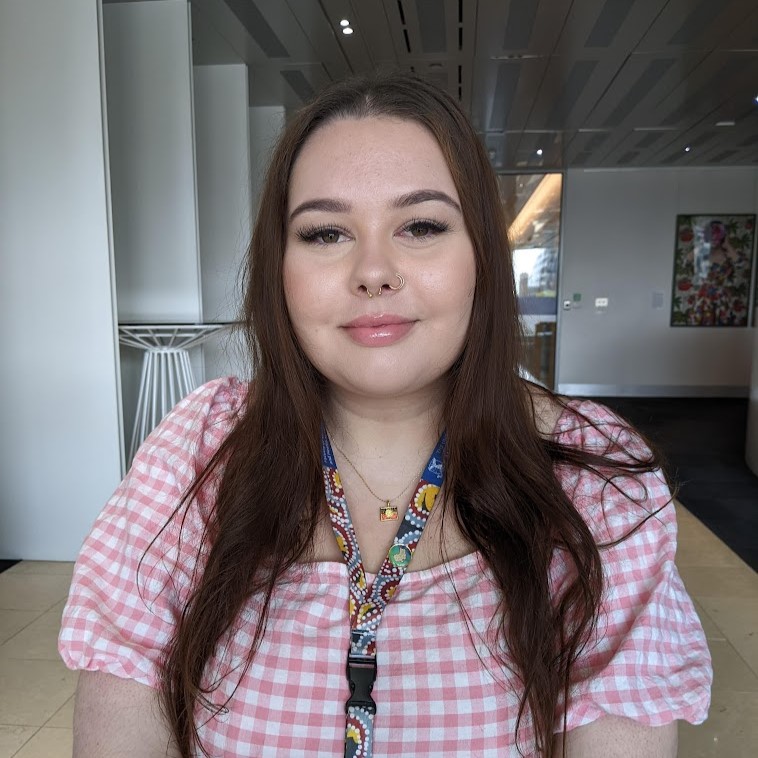Indigenous Development
Our Team
As a Faculty, we have worked collectively towards sustainable, targeted approaches to increase our Indigenous workforce and student recruitment and graduation. The Faculty’s diversity of expertise and knowledge has broadened by increasing our Indigenous academic leadership. This in turn offers a more diverse research, teaching and learning environment to inspire and enhance our PhD and graduate students’ experience.
Our Indigenous Leadership
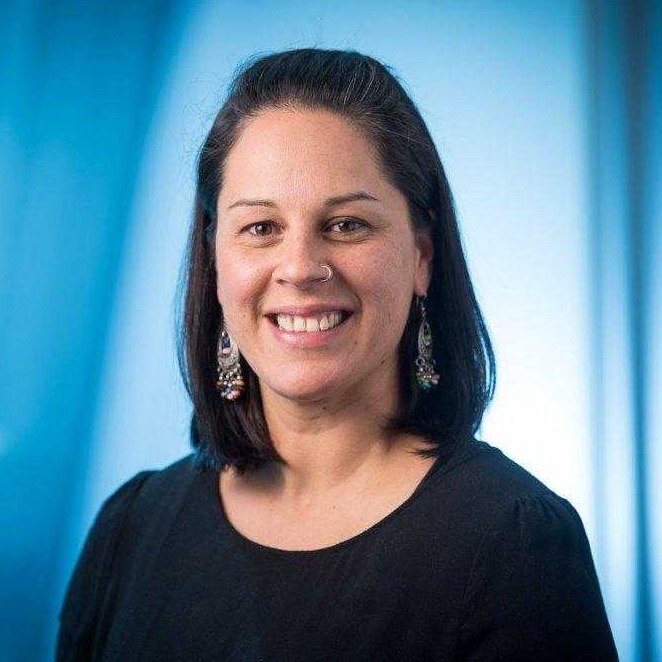 Shawana Andrews
Shawana AndrewsAssociate Director, Poche Centre for Indigenous Health and Senior Lecturer, Aboriginal Health
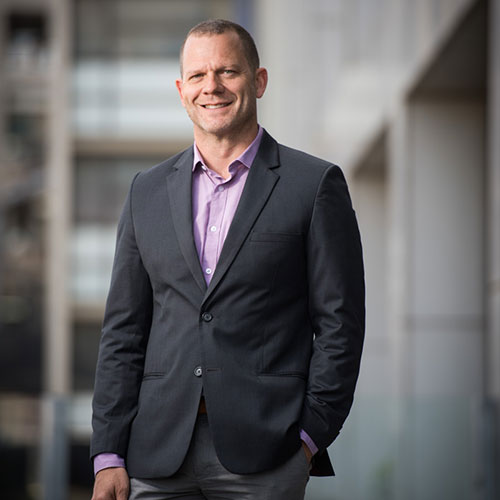 Professor Shaun Ewen
Professor Shaun EwenPro Vice-Chancellor (Indigenous) and Director, Melbourne Poche Centre
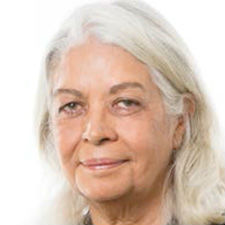 Professor Marcia Langton AM
Professor Marcia Langton AMAssociate Provost and Chair, Indigenous Studies
MDHS Indigenous Postdoctoral Fellowship
The MDHS Indigenous Postdoctoral Fellowship aims to support the next generation of Indigenous academics. This three-year Fellowship offers mentorship and career development for MDHS PhD graduates and candidates and supports them to pursue research goals.
Find out more about the initiative and how to apply here.
Indigenous Development Publication
The Sharing Knowledge and Future Leaders – Indigenous Development publication outlines our Faculty's efforts to make a sustained contribution to better health, education and living standards for Indigenous Australians.
Sharing Knowledge and Future Leaders – Indigenous Development (PDF)
A Uniquely Australian Faculty Report
A Uniquely Australian Faculty outlines some of the many ways we have worked and continue to work towards reconciliation across the Faculty: from our employment practices to our teaching programs, from our research to our community engagement.
A Uniquely Australian Faculty – Indigenous Health and Development as the Cornerstone (PDF)
Indigenous Development Action Plan
Our Indigenous students, teachers and researchers are an asset to this Faculty, adding to our great diversity of expertise and knowledge. Indigenous people bring with them a wealth of experience and skills that enrich the perspectives offered by the Faculty, and enhance the impact of our work on the health of Indigenous communities.
Starting a Research Career
After completing her PhD in Microbiology and Immunology at the Faculty of Medicine, Dentistry and Health Sciences in 2007, Dr Misty Jenkins became the first Indigenous Australian to attend either Oxford or Cambridge University. She has since been mentored by Nobel-prize winning immunologist Professor Peter Doherty, and in 2011 commenced working with Professor Joe Trapani as a National Health and Medical Research Council (NHMRC) postdoctoral fellow in the Cancer Cell Death laboratory at the Peter MacCallum Cancer Centre in Melbourne. In 2013, Dr Jenkins was awarded a prestigious L'Oreal Australia and New Zealand for Women in Science Fellowship.
Ngurra-Jarraddjak (Healthy) Indigenous Graduate Study Options Program
The University of Melbourne and Faculty of Medicine, Dentistry and Health Sciences have developed an undergraduate ‘gateway’ program to prepare Indigenous students for graduate health sciences degrees.
The Ngurra-Jarraddjak (Healthy) Indigenous Graduate Study Options Program is a national week-long residential program that gives undergraduate students exposure to different health research institutions, meet Indigenous health professionals, discover pathways into different health careers and the opportunity to meet faculty staff and alumni. The program envisages the knowledge given to the students during the week will increase future health graduate enrolments.

Objectives
- To showcase Melbourne as a realistic destination of choice for Indigenous health and biomedical science aspirants.
- To provide training in laboratory skills, relevant to health and biomedical sciences.
- To establish mentor relationships for participants.
- To operate as a recruitment strategy for Indigenous students into graduate coursework within the Faculty of Medicine, Dentistry and Health Sciences.
Costs
Flights, accommodation and meal expenses will be covered by the University of Melbourne.
How to apply
To apply, complete an application form, a Confirmation of Aboriginality or a Statutory Declaration, a signed reference from an academic or professional staff member at your university, and a permission to be photographed form, then send all required forms in an email to Ruby Shepherd (ruby.shepherd@unimelb.edu.au).
- Application form (PDF, 541KB)
- Statutory declaration (PDF, 168KB)
- Permission to be photographed form (PDF, 2.7MB)
Further information
For further information, please email Ruby Shepherd.

The Art of Healing
The Art of Healing: Australian Indigenous Bush Medicine, was a major exhibition at the University’s Medical History Museum in 2018. In 2019-2020 the exhibition is travelling to King's College London and the Museum of Medical History, Charité–Universitätsmedizin Berlin. It explores the enduring presence and evolution of Indigenous medicine and presents, through contemporary art, examples from many communities.
Dental care in the Northern Territory
The Melbourne Dental School’s partnership with Miwatj Health in East Arnhem Land is improving local oral health and giving Bachelor of Oral Health students valuable hands-on experience.


Putting healthcare in context
Physiotherapy students are taking healthcare to the community at Bubup Wilam, an Aboriginalchild and family centre in Melbourne’s northern suburbs.
Teddy Bear Hospital visits VAHS
Teddy bears helped break down barriers and pass on important health lifestyle messages to children and families at the Victorian Aboriginal Health Service (VAHS).


Indigenous Development Publication
The Sharing Knowledge and Future Leaders – Indigenous Development publication outlines our Faculty's efforts to make a sustained contribution to better health, education and living standards for Indigenous Australians.
How to Get Started as an Indigenous Student
Chat with our student support officers via mdhs-indigenous-admissions@unimelb.edu.au. They will be able to assist with a general discussion and steer you in the right direction.
If you would like to find out about our Indigenous programs and support centres, you can contact Ruby Shepherd (ruby.shepherd@unimelb.edu.au) or Jasmin Ehlert (jasmin.ehlert@unimelb.edu.au) from our Indigenous Development team.
Our administrative advisers (mdhs-rhd-admissions@unimelb.edu.au) are also keen to assist with Faculty administrative queries.
For general, yet thorough information on how to get started visit the Graduate Research Hub.
When enrolled, you can also access: Student Services
Useful links
Melbourne Poche Centre for Indigenous Health
The University of Melbourne takes the approach that support for Indigenous research students should be tailored towards each student, and the Melbourne Poche Centre for Indigenous Health supports Indigenous research students by identifying the tailored support required.
Murrup Barak
The University of Melbourne welcomes Aboriginal and Torres Strait Islander students to all courses and programs, and Murrup Barak is here to help future students discover their options and start studying. Murrup Barak supports the Indigenous student community and delivers an integrated educational and cultural program to ensure that Indigenous students have every opportunity for success in their studies.
Indigenous Studies Unit
The Indigenous Studies Unit undertakes research aiming to improve outcomes in Indigenous health, particularly in relation to alcohol misuse and family violence, Indigenous data sovereignty, digital archives, cultural heritage, technology and resource management.
LIME Network
The LIME Network is a dynamic network dedicated to ensuring the quality and effectiveness of teaching and learning of Indigenous health in medical education, as well as best practice in the recruitment and graduation of Indigenous medical students.
How do we work to ensure that both our built and natural environment, as well as our protocols and ceremonies, incorporate and embed appropriate cultural recognition of the ancestors on whose land we now occupy and work, and the Indigenous people who we now serve?
We have made some fundamental gains in this area, but many more opportunities remain for both the Faculty and the University to mark their respect for the contribution of Indigenous peoples to this institution
Possum Skin Cloak
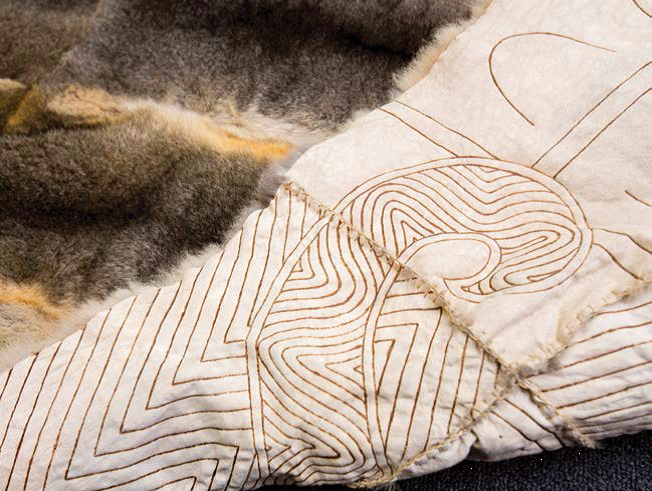
"The Possum Skin Cloak] honours the Wurunderji tradition, their high formal culture and their countrymen, the Bunerorong, Waudawurrung, Dja Dja Wurrung, and Tungwurrung..."
Ian Anderson, Director of Murrup Barak
From the artist: Mandy Nicholson
The University of Melbourne asked me to create a cloak with traditional Wurundjeri designs, and which also reflected a student's life at university. The use of traditional Wurundjeri symbology is respecting the fact that Parkville is on Wurundjeri Country and as a sign of respect to my ancestors.
The swirl throughout the design depicts two things. Firstly it represents the smoke of a welcoming fire (by way of a traditional Wurundjeri Welcoming Ceremony). This welcomes all students from local to all over the world.
Secondly, the smoke swirls depict the learning and personal journeys of students and the connections that they make personally and professionally while at university. This can be on a small scale (the University/Parkville), and on a larger scale where once they have completed their courses they share this knowledge with their own and the wider community. This is shown in the design by the swirls that go in all directions, but at the same time never swaying too far away from their main goal of attaining a degree.
The lines within the swirls show on more of a macro scale the obstacles that may present themselves throughout study life. These smaller, wavy lines all remain connected to the support structure of friendships and the university itself.
Billibellary's Walk
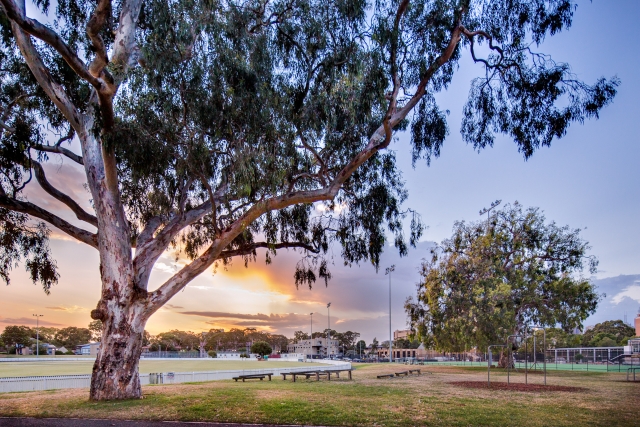
Consider your place here on this land today. What does it mean or represent to you? How do you interact with it? How do you connect with its history and how will you contribute to its memories?
Commentary from Billibellary's Walk, The University of Melbourne
A cultural and historical interpretation of the urban landscape and an exploration of the experience of 'place' as it may have been for the traditional custodians of the land, the Wurundjeri people, before colonisation.
Onemda VicHealth Koori Health Unit has collaborated with other Centres, Faculties and Institutes at the University of Melbourne and the Wurundjeri Tribe Land and Compensation Cultural Heritage Council to develop a walk through the University's Parkville site using a narrative from an Aboriginal perspective.
For more information
Header artwork note: The header artwork combines an image of white blood cells destroying cancerous target cells and an illustration representing generations of people sustained by the Myrnong (yam daisy) - a historical staple food of Indigenous people, bringing together Indigenous culture, community and the health sciences. The artwork is the product of a collaboration between Shawana Andrews, Misty Jenkins, Nichole Allder and Kristi Roberts.

